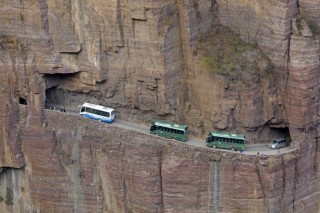Sands of Sahara: Depths
The land covers only 29% of the Earth's surface, with vast expanses of mountains, plains, and forests. However, a significant portion of the remaining land is classified as desert.
Among these deserts, the largest and most renowned is the Sahara Desert, located in Africa. Scientists have long been intrigued by the depths of this vast desert and the potential consequences of excavating everything beneath its seemingly endless expanse of sand.
Deserts can be found in nearly every country, albeit occupying smaller areas. Despite their size, they share similar characteristics and landscapes, consistent with the desert environment as a whole.
The Sahara Desert, stretching across an immense area, holds the distinction of being the world's largest desert. Spanning approximately 9.32 million square kilometers, the Sahara extends roughly 4,800 kilometers in length and 1,800 kilometers in width.
The Sahara Desert exhibits a diverse range of landscapes, featuring stretches of sandy desert, gravel desert, rocky terrain, and even a small salt desert nestled within. Throughout the desert, vast sand dunes dominate the scenery, with varying heights depending on location.
Characterized by aridity, the Sahara experiences minimal rainfall, averaging around 90 millimeters annually. In some instances, rainfall may not occur for two to three years, intensifying the harsh conditions.
Consequently, the scarcity of water resources poses immense challenges to survival, earning the Sahara Desert its reputation as a forbidden zone for both humans and other forms of life.
Considering the fundamental nature of Earth as a rocky planet, it follows that rocks exist beneath the landforms in any given area, including the Sahara Desert. Thus, even if the sand were to be excavated, the bedrock would still lie beneath. But just how deep does the sand extend in this vast desert?
While obtaining precise measurements of sand dune depths across the entire Sahara Desert is challenging, geologists have speculated an average depth of approximately 150 meters through extensive research.
To put this into perspective, 150 meters is equivalent to the height of a modern skyscraper, underscoring the immense volume of yellow sand within the Sahara Desert.
The formation of sand dunes in the Sahara occurs over extended periods as wind continually blows sand particles, shaping and shifting the landscape. These dunes vary in shape and size, with some towering tens or even hundreds of meters high, while smaller dunes may reach only a few meters in height.
The yellow sand comprising the Sahara Desert primarily consists of fine quartz grains that are frequently transported by the wind. These grains leave gaps between them, enabling the flow of air and moisture.
If the entirety of the sand were to be excavated, the desert region would transform into an enormous depression, exposing bare rock and soil. Such an alteration could have significant repercussions on the desert's delicate ecosystems, disrupting the balance of life in these arid regions.
The Sahara Desert stands as the largest desert in the world, spanning a vast expanse of land characterized by diverse landscapes and harsh conditions. While the precise depths of its sand dunes remain elusive, geologists estimate an average depth of approximately 150 meters.
The Sahara's iconic yellow sand, composed of fine quartz grains, is constantly shaped by the wind. If the sand were excavated, the desert's ecosystem would be dramatically transformed, with bare rock and soil replacing the once-dominant sandy expanse.
You may like:



